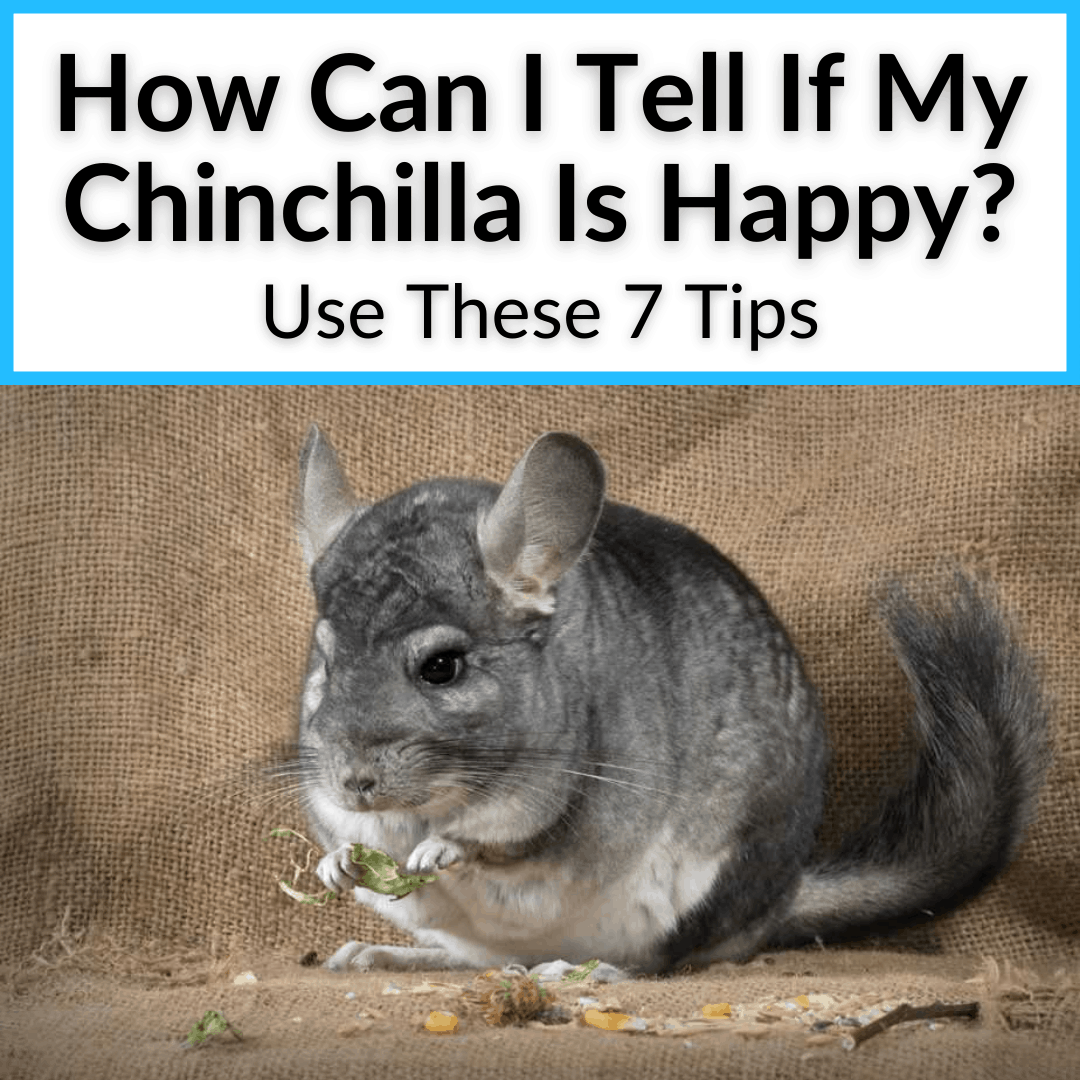
It will never make it 100% obvious that it is happy.
But chinchillas can certainly feel happy and they do have ways of showing it.
They’re just not always obvious.
But if you know what to look for, you can always tell how your pet is feeling.
Keep reading for 7 great tips to help you recognize when your chinchilla is feeling happy.
Contents
How Can I Tell If My Chinchilla Is Happy?
A happy chinchilla will be excited to see you. Happy chinchillas also eat and consume water at routine intervals.
Happy chinchillas are sociable, energetic, and often enjoy being handled by their owners.
Now, that’s only the basic answer to the question.
The rest of this post will dive deeper into your chinchilla’s emotions and break down what exactly you can look for to determine if your chinchilla is truly happy or not.
By the end of this article, you should be much more educated on how to recognize your chinchilla’s happiness, or other moods, for the current day.
The Importance Of Reading Chinchilla Body Language
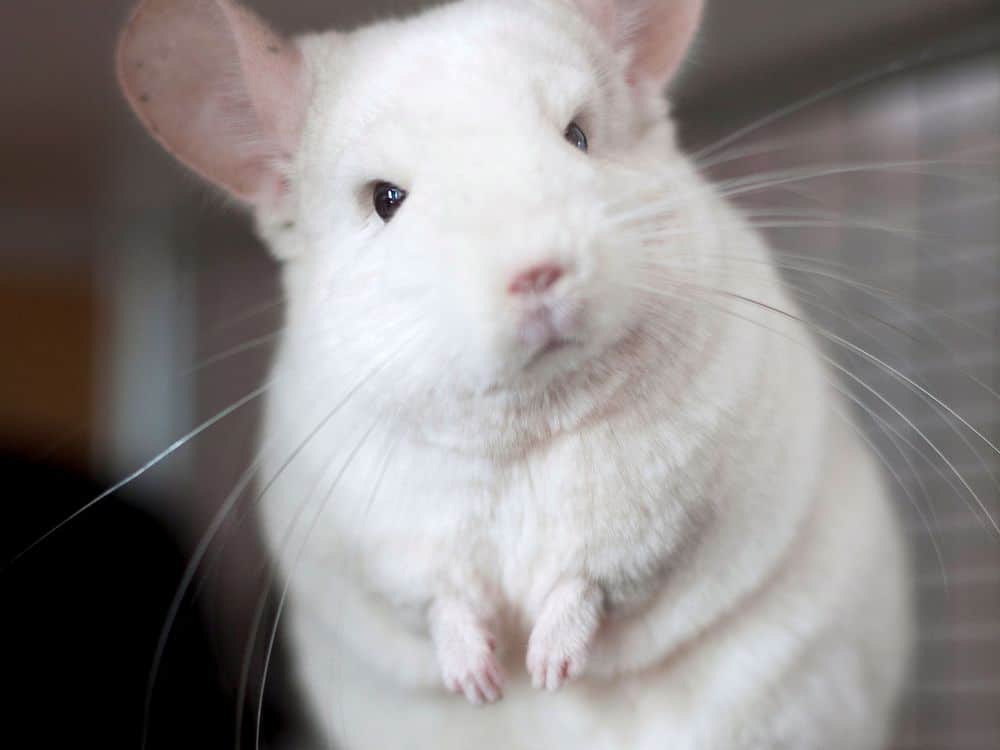
Understanding when your chinchilla is happy is a natural desire after adopting your new pet. Obviously, we want the bond to grow and the relationship to flourish.
Luckily, if you know what you are looking for, it becomes relatively easy to distinguish happiness and boredom or depression with a chinchilla.
It doesn’t take long for the relationship to begin forming and for you to begin understanding what makes your chinchilla tick and glow with enthusiasm.
It’s also essential that you try to understand these signals for several other reasons. First and foremost, it makes it much easier for you to recognize when the opposite is taking place.
The opposite being depression, frustration, and potentially even illness. Recognizing its moods helps you be more alert and knowledgeable of your chinchilla from just about every angle.
Secondly, it’s essential to understand that it does take time for this communication and happiness to show its face in the beginning.
Some chinchillas that you adopt from local breeders may be very quick to adapt and begin showing their happy and curious personalities. Other chinchillas may take several weeks.
Nonetheless, it’s important that you give it time. Trust me, I know from first-hand experience that the first few weeks are challenging and confusing at the same time.
It gets better.
7 Tips To Recognizing Chinchilla Happiness
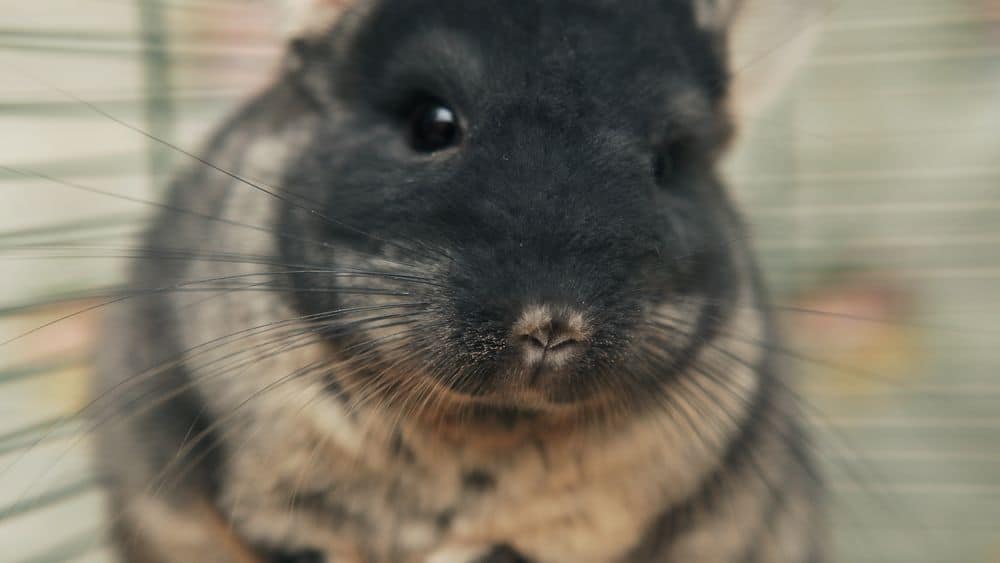
Now that you understand the importance of recognizing your chinchilla’s body language and understanding its emotions, let’s dive into 7 signals you can look for to determine whether your pet is happy.
Tip #1: Happy Greeting And Overall Attitude
This may seem obvious but needs to be mentioned. It’s an easy sign that your chinchilla is happy.
When you enter the room or plan to allow your chinchilla out for playtime, it should be front and center, depending on the circumstances, ready to jump out and interact.
Of course, chinchillas do have some times of the day that when they prefer not to be overly active.
But for the most part, once your chinchilla has adjusted to its new environment and has come to trust you, it should be easy to tell that it is excited to see you and that it would love to come out of the cage for some much-desired playtime.
Tip #2: Eating Normally
A chinchilla eating the proper amounts of food and consuming enough water is another strong sign that it is not only happy, but also healthy.
A chinchilla battling any form of depression or social issues will often be more lethargic and not as eager to eat.
Make sure you are paying attention and tracking the number of pellets, timothy hay, and water your chinchilla is consuming.
If you need help understanding what foods and even fruits a chinchilla can eat, you can view my post here.
Tip #3: Loving Its Dust Bath
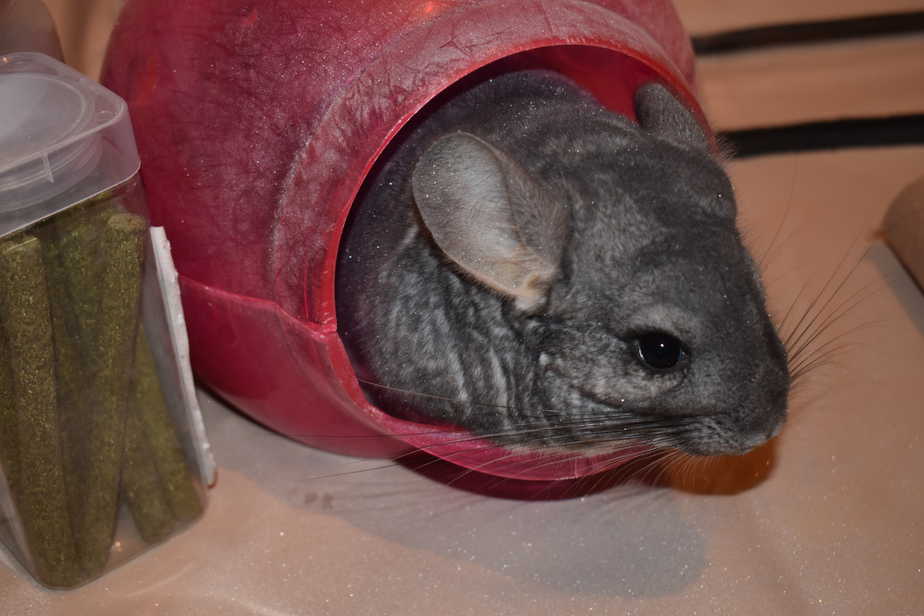
For those who are new to owning a chinchilla, you may not be aware just how much these animals absolutely love taking their dust bath.
It should be rare that your chinchilla doesn’t get excited about coming out to roll around in some dust and get cleaned up.
It’s an easy way to spot if your chinchilla is in its typical happy mood, or if something is bothering it.
Luckily, to maintain a chinchilla’s proper hygiene, you should provide 2 to 3 dust baths a week, at a minimum. That is how you wash a chinchilla (more accurately, they wash themselves).
It also gives you a great opportunity to interact, and also provides you several chances per week to check in on your chinchilla’s status and ensure it is happy.
Tip #4: Warming Up To Handling And Cuddling
This is one of the only tips on this list that doesn’t always necessarily mean that your chinchilla isn’t happy. They may just not enjoy handling or cuddling in the beginning.
A chinchilla can be perfectly happy and just need time to warm up to you before it becomes less timid and scared to be handled.
It takes practice and patience. In fact, I have a blog post dedicated to this topic discussing how to increase your chinchilla enjoyment for being held. You can read it here. And you will find some tips on how to get a chinchilla to like you here.
As time passes, your chinchilla will come to enjoy those bonding moments with you and will enjoy being handled. And that will then give you an easy way to recognize if your chinchilla is happy and healthy.
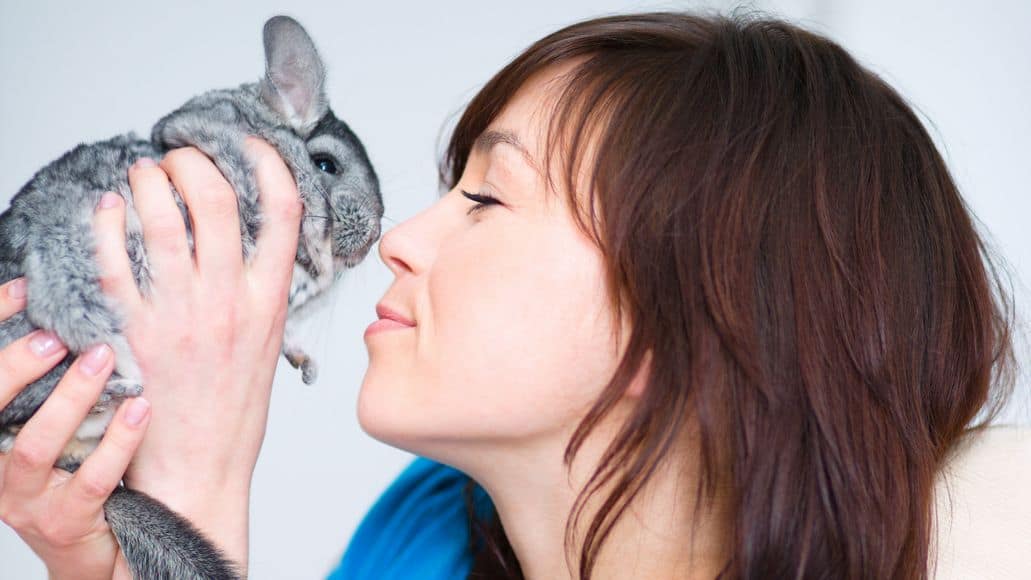
Tip #5: Chattering Sounds During Interactions
Another behavior a chinchilla may display to show off some enthusiasm and happiness is making simple chattering sounds during playtime, or even while being held.
Don’t be alarmed by this.
As long as it is not trying to run away or slipping fur, the sounds your chinchilla is making are likely a signal to you that it is enjoying what you are doing and is happy that you are giving it attention and time out of the cage.
Tip #6: Happy To Accept Treats
This ties back into tip #2 in a few ways. A chinchilla that is happy to eat is likely pleased overall.
Often, a chinchilla can experience other moods or temperaments that will cause it to act the in the opposite manner.
If your chinchilla is happily accepting treats and showing enthusiasm at the offer, your chinchilla is happy.
If, on the other hand, your chinchilla has no interest in your treats and offerings and you notice more hay and pellets left over each day, something might be bothering it.
Tip #7: Typical Jumping And Climbing
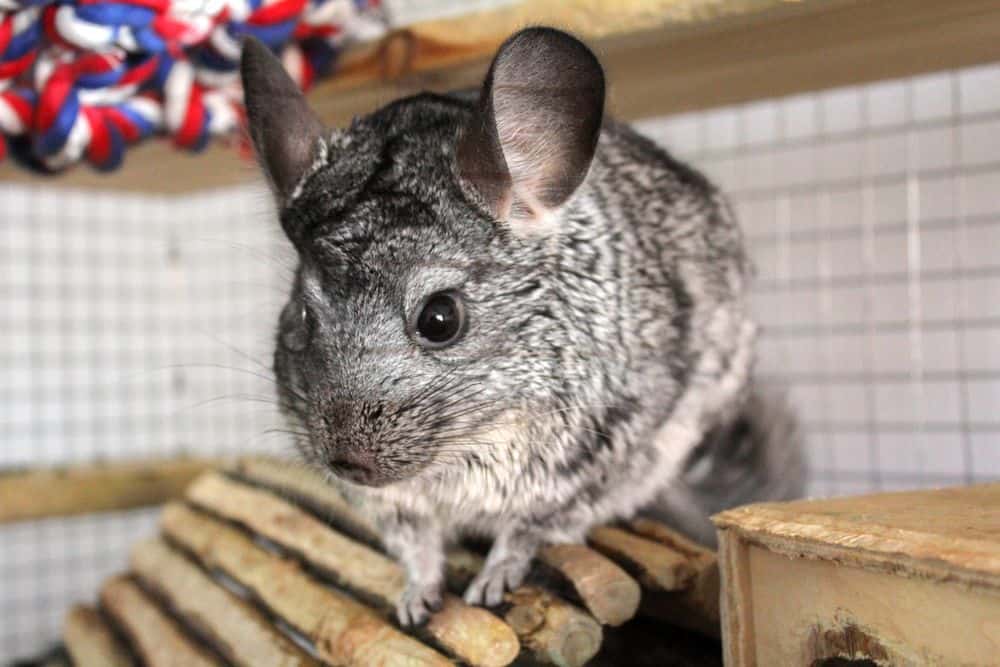
Chinchillas jump and climb nonstop. Or at least they should be doing so. A chinchilla’s natural behavior is to always be moving around in some form of vertical motion.
It’s the same way this crazy rodent acts in the wild. They love hopping around randomly. This behavior is referred to as popcorning in chinchillas.
The chinchilla cage you choose should promote this by being tall enough and having plenty of the best accessories and ledges throughout the cage.
If you need help with this, feel free to read my post here about the best chinchilla cages.
I personally have been recommending the Critter Nation 2 Dual-level for several years now. You can real my full review of this cage here.
It’s a great option if you currently have a small or wire bottom cage and you’re looking to swap out.
How To Increase Your Chinchilla’s Happiness
Now that you know what you should be looking for to spot happiness with your chinchilla, let’s talk for a brief moment about a few things you can do to ensure that your chinchilla is getting the attention and love needed to increase happiness and social activity.
My most significant piece of advice on how to make a chinchilla happy is to make sure you make just a little bit of time each day to interact with your pet.
Chinchillas are very social creatures, and a small amount of effort will go a long way towards making your pet warm up to you and remain happy.
Always ensure you are providing the healthy diet a chinchilla needs to thrive and make sure that your cage is large enough to accommodate plenty of accessories to promote physical and mental stimulation.
If your chinchilla is comfortable, gets to act in its natural ways, and gets attention from you, I can nearly guarantee that your chinchilla will be happy for a long time going into the future.
Tell If Chinchilla Is Happy: Final Thoughts
There you have it. It’s as easy as 1,2,3 once you have the proper knowledge and a plan of action. Chinchillas are a unique rodent that certainly can bring a lot of joy to any household.
It’s one of the reasons they make one of the best pets a family can own. Not to mention a straightforward pet to care for.
Use the tips above to understand when your chinchilla is happy or displeased and enjoy the time as the relationship grows.
Best of luck with your new chinchilla journey.
Share your thoughts and advice on chinchilla happiness.
What do you do to understand and communicate with your chinchilla on a better level?
Do you have any further tips you can provide the readers about how to understand if your chinchilla is happy or not?
Be sure to share your stories, thoughts, and concerns by dropping a comment below.
As always, Chili and I appreciate you stopping by and reading. Thanks again, and we will see you next time.
Leave a Reply